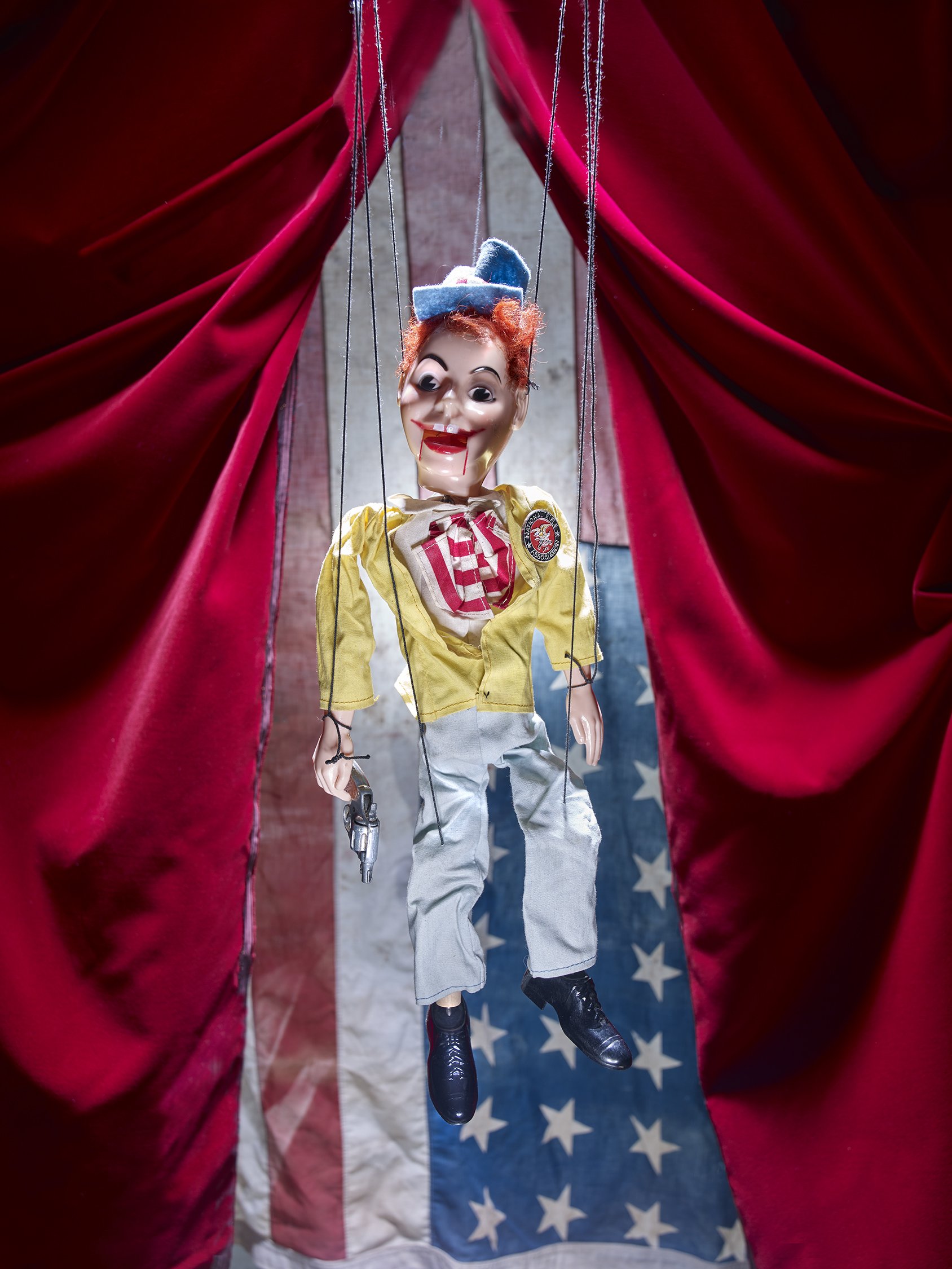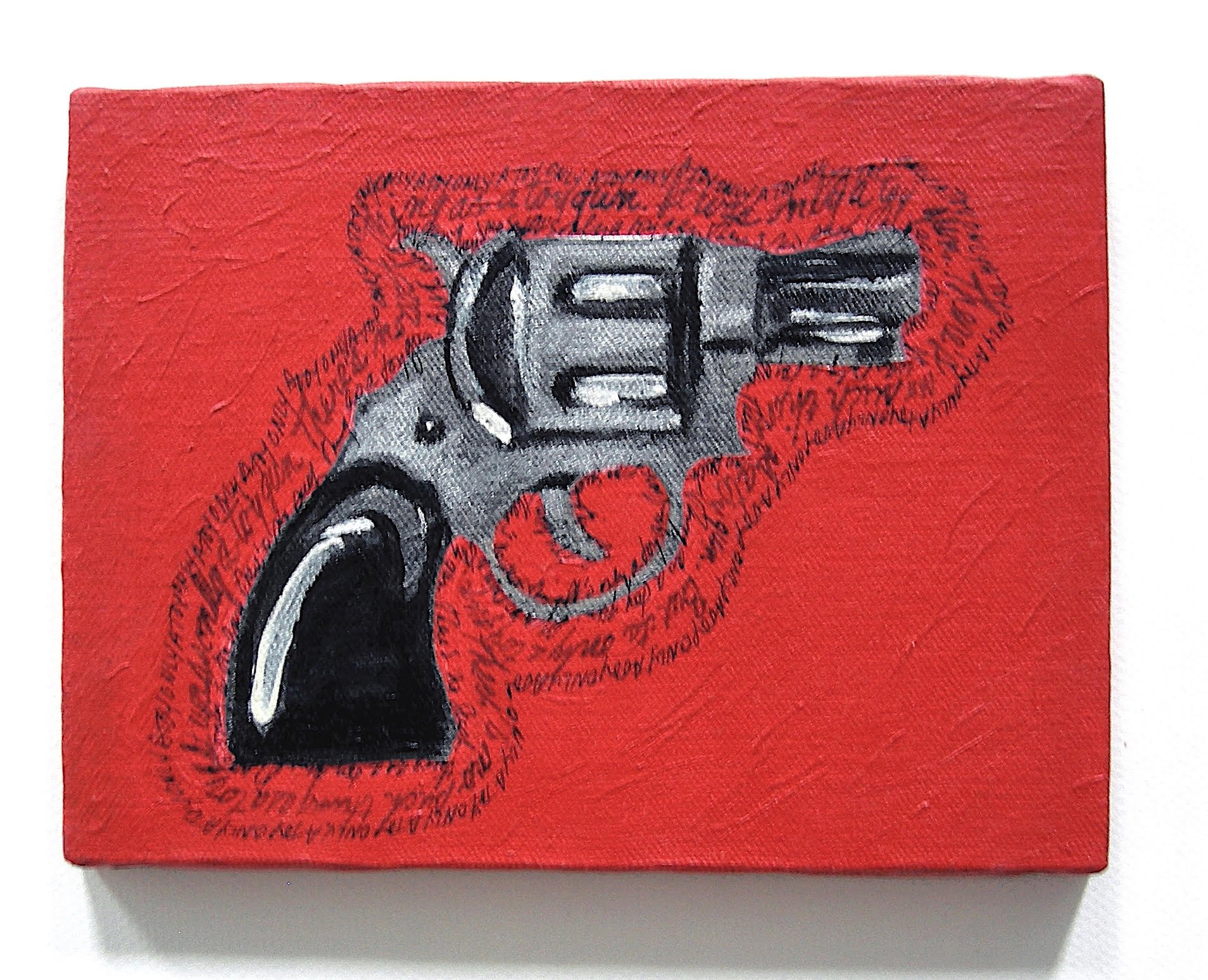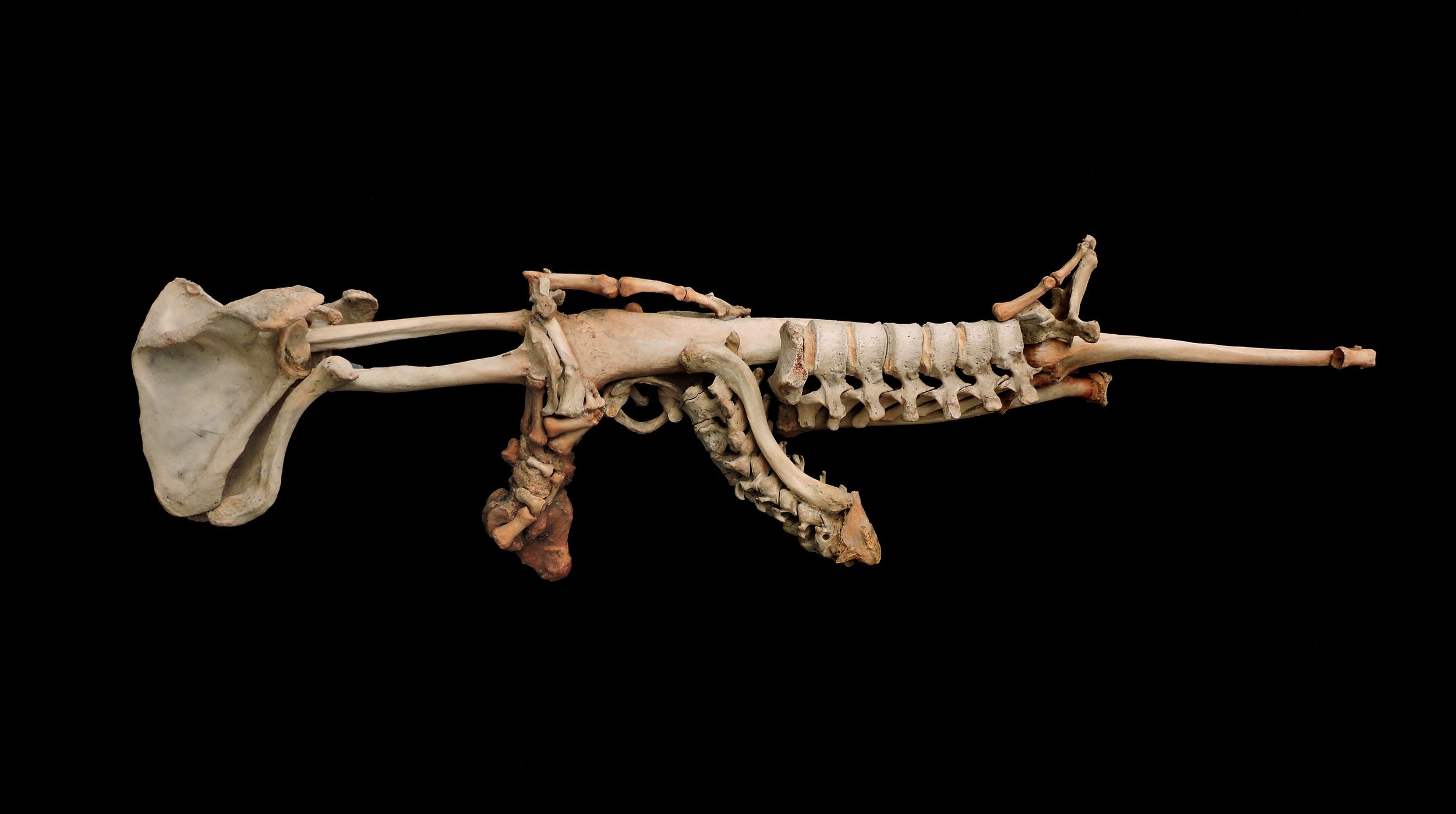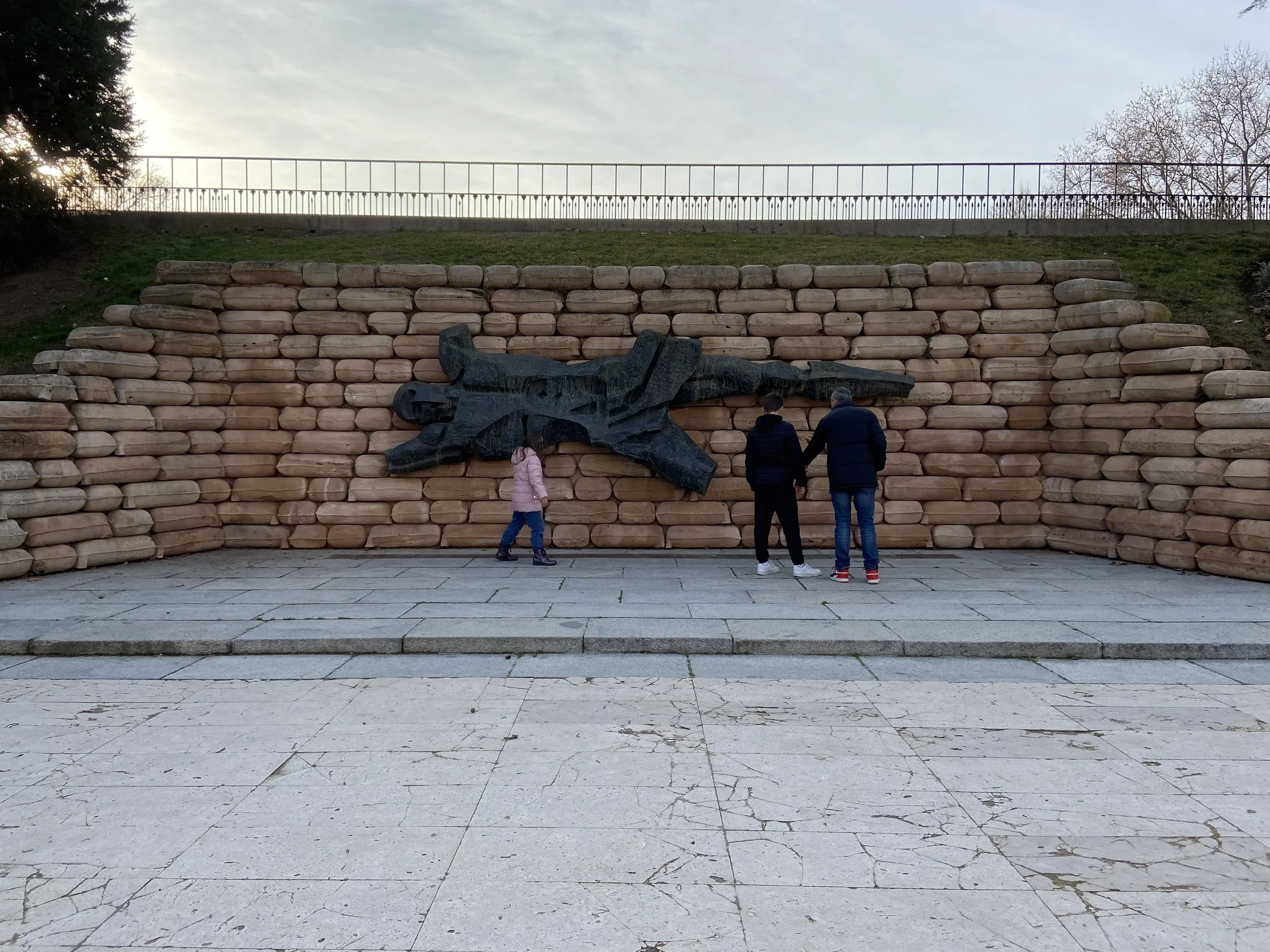PAST EXHIBITION
Taking Aim: Art that addresses gun violence.
Curated by: Tamara White, Ph.D
The United States experienced more than 70 mass shootings in the first two months of 2023, and the rate of occurrence is not slowing down. In the last three years, there have been more than 600 mass shootings, almost twice daily on average. Historically, art has been used as a change agent; from protest signs of the 60s to graffiti art in the 80s, artists have played a pivotal role in bringing forth a shift in perspective. The following artists have examined gun violence in their work to create a dialogue and incite change.
The artist Michael Coppage, a Cincinnati local, uses provocative visual and audio pieces to address the still-operating racial disparities in American culture by exploring the negative archetypes and stark racial differences still operating in the language and contemporary American cultures. Through provocative sound, video, and photography installations, Coppage’s participatory projects elicit questions and upend stereotypes by inverting historical scenarios and asking viewers to confront racist terminology. Additionally, Coppage’s work reminds us that racial conflict and vulnerability are frequently targets for those in a position to serve and protect.
Moses Nornberg
“On my first trip out of the United States, I had a conversation with a Frenchman who described America as a violent place. Surprised, I asked what he meant and he described seeing all the images of people with guns and shootings in the US on the French news. I was struck by the perception that “everyone in America has a gun,” and I later returned to the US and created Bullet Flag, the colors and patterns of which are made entirely by spent bullet casings, collected from shooting ranges around the Mid-West.”
JEFF CORWIN From the series: Guns in America
After his father passed away in 2007, Corwin went through his possessions and found three vintage handguns. Items the artist was unaware of. Due to the gun violence in the United States, he was uncertain about what to do. Torn between the items belonging to his dad, and his feelings about gun control policies, he decided to lock them in a box and store them in his basement. In 2012, after the Sandy Hook shooting, Corwin took a road trip with a good friend and photographer. It was on this trip that he came to the decision to photograph his father’s guns before potentially getting rid of them. After extensive experimentation, which included wandering through antique stores and junkyards looking for props to build the sets, Corwin eventually found a rhythm in his images with harsh light, both frontal and from the side, with loud, tweaked, and saturated colors that evolved into the series Guns in America. The images are not subtle. Nor is the subject matter and the violence we face daily.
“If arming more people meant that we would be safer, we would be the safest country on earth.”
- Shannon Watts
Mimi Smith received a BFA from Mass Art in 1963, and an MFA from Rutgers in 1966. Her grants and awards include NEA, NYSCA, NYFA, and Joan Mitchell grants, Mass Art Distinguished Alumni Award 2016, and Estelle Lebowitz endowed artist Douglass Rutgers 2018. She has exhibited in galleries and museums internationally. Selected public collections include MoMA, the Fogg, RISD, Newark and Spencer Museums.
'Bang Bang’, 1990, computer prints, acrylic paint, ink on clock
‘Don’t Shoot’, 1984, pencil, graphic, on 2 papers
V.L Cox. Cease.
American Artist. I’m Blue (If I Was █████ I Would Die).
’Toy Gun’ 1980. Acrylic on canvas.
the writing says: "It was only a toy gun. There is no such thing as a toy gun’.
Brian Singer. Mahatma Gandhi.
From the collection of Sara Vance Waddell.
@TMNK. The Me Nobody Knows. Art is My Weapon.
Public art in Madrid. Gun installation with cement sandbags.
“This strife among ourselves wastes our energy and destroys our unity. My message to those of you involved in this battle of brother against brother is this — Take your guns, your knives… And throw them into the sea!”
- Nelson Mandela
WATCH: American Origami play by Jimmy Maize and Andres Gonzalez that addresses the collective grief that surfaces after mass shootings.
American Origami by Andres Gonzalez is the result of six years of photographic research, and results in a statement of over 700 photographs which closely examines the epidemic of mass shootings in American schools. The project includes first person interviews, forensic documents, and press materials, as well as original photographs and texts. The varied elements repeat and fold into each other, illuminating relationships between myth-making, atonement, and collective healing. Bound in a unique way, the book creates a parallel world of the past and the present, showing the silenced landscape interwoven with the personal artifacts created by those left behind.
Change The Ref (CTR), was formed to empower our Future Leaders. CTR gives the kids of today the tools they need to be empowered to make changes to critical issues that affect our nation, through education, conversation, and activism.
Exhibition
Resources
Building out local and state grassroots power, and lobbying Congress to close loopholes and pass common-sense legislation to save lives.
Brady emphasizes education, litigation, and legislation to ensure that every community is safe, not only from mass shootings, but also from the daily toll of gun homicide, domestic violence, suicide, unintentional shootings, and police violence.
#HereToo amplifies young activists’ voices through performance. Inspired by March for Our Lives, we gather stories about gun violence; archive and share these stories with theatre makers who, in turn, make devised performances.
A grassroots movement of Americans fighting for public safety measures that can protect people from gun violence.
A youth-led organization whose mission is to educate young voices about gun violence and mobilize them to take meaningful action against it.
Championing prevention and health equity, with a focus on safety, and wellbeing for all individuals, families, and communities.































